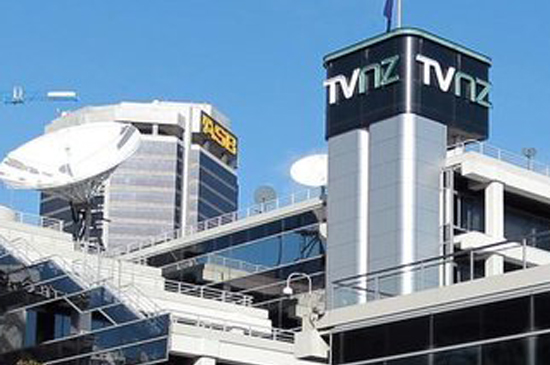
ANALYSIS: Christmas may be over, but the commercial humbug surrounding the future of public broadcasting has continued unabated. Policymakers and the mainstream media have been Scrooge-like in their indifference to the fate of small non-commercial channels such as Stratos, which was forced to close last month because of the increasing cost entailed in digital switchover.
A New Zealand Herald editorial suggested that the small television operators must sink or swim. The closure of Stratos and the scheduled discontinuation of TVNZ7 are taken as confirmation of their insignificance and justification for their extinction in the digital media market.
But such economic Darwinism is scarcely a justification for permitting the loss of diversity that accompanied the closure of channels such as Stratos and TVNZ7.
Their discontinuation signals the failure, not the triumph, of the market.
The government's broadcasting policy assumes that the proliferation of digital media platforms will increase competition and ensure a cornucopia of consumer choice.
Which sounds fine, except that's not how media markets work in practice.
Even with NZ On Air's support for local content, there is a scarcity of channels able to absorb the opportunity costs of producing or scheduling genres such as in-depth news and current affairs, educational content, children's drama, or minority programming.
Genuine diversity
A genuine diversity of content therefore requires a diversity of institutions, including those which cater to non-commercial audiences. Stratos TV and TVNZ7 have been able to offer prime-time schedules distinct from the commercial mainstream precisely because they were not driven by ratings.
Contrary to the government's wishful thinking, there are no broadcasters queuing up to renegotiate the deals Stratos had developed with Al Jazeera, DW-TV, Voice of America, Bloomberg, CCTV, and NHK, and no channels offering to schedule Media 7, Back Benches or an hour of prime-time local news after TVNZ7 closes.
The fact that the audiences for these programmes are small does not alter the fact that they extended the range of choice for the viewing audience. It is simply untrue that nobody was watching them.
The cumulative audiences for Stratos were reaching one million a month, while the average four-week cumulative ratings for TVNZ 6 and 7 in 2010 (their last full year of joint operation) exceeded those for Maori TV (which received twice as much public funding).
Moreover, audience research shows that the public do value genres that serve cultural, educational and democratic functions even when their own viewing preferences do not translate into commensurate ratings.
Untenable view
To maintain that the country cannot afford public television in the digital age at the same time as encouraging the expansion of pay television is untenable. The fact that roughly 50 per cent of households subscribe to Sky suggests many people are willing to pay for a greater range of choice. But the assumption that pay TV is now the default model and that exorbitant subscription fees are inevitable if we want a half-decent range of channels expediently ignores the fact that many people cannot afford them.
Right now, a subscription to Sky including the premium sports, movies, SoHo and arts packages, costs $134 a month. For its entire range of services (excluding pay-per-view) the cost would be nearly $240. Last year Sky's operating and depreciation costs were $600 million.
Suppose that were spread across all 1.64 million households: hypothetically, all Sky's channels could be made available to everyone for $365 a household a year ($30 a month or a dollar a day, which puts the value of Igloo's 11 pay channels for $25 into perspective).
That is not to suggest that we nationalise Sky, but it's interesting to note that some of its pay channels have small audiences not much greater than TVNZ7 or Stratos.
Evidently, subscribers don't mind supporting channels they don't watch so long as they gain access to those they value. That principle could apply equally well to public television services.
Spain and France have introduced small levies on advertising, pay TV and telecommunications to help support public broadcasting.
Advertising levy
If New Zealand introduced a flat 1 per cent levy on telecommunications and pay TV providers, this could generate about $60 million a year. That would be enough to maintain a public service television channel such as TVNZ7, support the regional and community television and radio broadcasters, double the Platinum fund, and increase the funding for both the Maori Television Service and Radio New Zealand by 30 to 40 per cent.
The cost would be passed on to the consumer at a level lower than the rate of inflation, so it would cost the levied companies virtually nothing, and because it would come from outside the consolidated fund, it would be fiscally neutral.
So it is possible to afford public television services. TVNZ7 and Stratos could be saved. But this requires political will and imagination and a willingness to re-examine how the digital media ecology can be made to function in the interest of the public, not just corporate media shareholders.
This article was first published in The New Zealand Herald. It has been republished with the permission of the author Peter J. Thompson.

This work is licensed under a Creative Commons Attribution-NonCommercial 3.0 New Zealand License.



